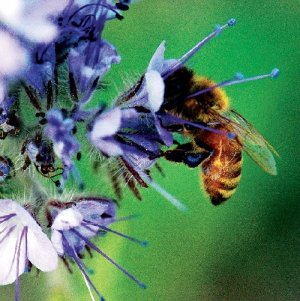Promoting organic matter and a soil biomass is one of the key goals, be it part of an organic regime or a conventional one. It’s no secret that cover crops can greatly assist in this regard, with the improvement to soil structure alone helping to alleviate erosion, increase water retention, facilitate better drainage and encourage efficient nutrient cycling.
There are also additional advantages associated with beneficial insects, biodiversity, sustainability and health. However each site, each sub-region within Central Otago – and across the country for that matter – has its own quirks and attributes that need to be explored in identifying which cover crops are most suitable to each plot of land. Three viticulturists/vineyard managers from three different sub-regions of Central Otago give their take on what works best for them.
Nick Paulin, vineyard manager for Peregrine.
“There’s some pretty hard evidence of the benefits of cover crops; the Rodale Institute (www.rodaleinstitute.org) has been doing trials for decades. To me, it’s diversity and enhancing the soil. In saying that, you can definitely mismanage the use of cover crops too. I think you have to have a purpose; there’s no point planting something if you don’t know what it does. It’s a conscious decision to enhance an aspect of the vineyard; soil organic matter, biodiversity, moisture competition, nitrogen fixing, whatever. Each cover crop has its own purpose.”
“Ground preparation is critical and ideally you don’t want to leave the soil bare. Having the right tools for the job is important. To direct drill, you need to have a direct drill, and if you’re sowing into heavy grass, you need to cultivate to have it established. But over-cultivating happens too; rotary hoe’s a classic. It’s a pretty nasty piece of equipment. You chop the soil into a million pieces and undo the work that you’re trying to achieve. You might get away with one pass, rather than three passes with a set of discs, but you don’t want to do three passes with a rotary hoe. Whilst aeration is critical, cultivation can be detrimental; it’s a step back to take three steps forward.”
“We used triticale and peas (4 of every 10 rows) and it worked, but it should have been sown a month earlier to take advantage of that spring growth. Our flowering crop was a mixture of mustard, buckwheat, phacelia, red and white clover. The strike was good, but again, the summer hit and it dried out. At the end of the day, it’s down to the individual grower – some vineyards in Central can’t grow anything in winter, and we struggle to grow things in summer. I know what worked in Bannockburn and it doesn’t work in Bendigo. It’s early days though – I’m going to do some trials this autumn to see what works. It might take five years, but then you have the full benefit of the money you’re investing.”
Just down the road at Northburn, Viticulturist Shane Livingstone has to tackle things differently.
“For us, the challenges of establishing a cover crop comes with low potential soils, long periods without moisture and cold soil establishment temperatures. However, these are the reasons we are trying to grow cover crops; moisture retention, soil fertility, cycling and conditioning.”
“The timing of planting is key. It has to be done as the soil is warming up, before it dries out too much. In this past season I planted a blend of buckwheat, plantain and chicory. It took a while to establish and for the second season in a row I found myself mowing during flowering because it was too dry and the buckwheat had curled up. But it was surprising to find that the chicory and particularly the plantain had continued to grow through the summer. I’ll look to substitute phacelia for buckwheat next season.”
Blair Deaker, Viticulturist for Carrick, is based on the Cairnmuir side of Bannockburn with very sandy soils.
“Generally people sow in the spring, but that doesn’t work for us. We’ve tried cultivars of rye corn and fodder barley or fodder oats as single species. Yes, we get strikes, but when summer hits they die off and the fat hen takes over. The climate, the sand, everything – it just doesn’t work. We do our phacelia, alyssum and buckwheat mix throughout the blocks in spring, and we’ll use other flowering species too, but it’s really hard to get things established.”
“Our plan now is to sow in early March. We did this after the rain in February; a mix of rye corn, mustard, sheep’s burnett, white lupins and rape. The idea is to sow in February so it strikes and gets settled into the ground. It then overwinters, and grows away in spring as it warms up. Then we’ll either mow it or turn it in. It could be an 18month turnaround, being mindful of spring frosts. Gareth at Felton Road on the other side of Bannockburn uses triticale, but it doesn’t work for us. We’re trying to work on things that will actually live for us.”
Whilst these three growers manage to certified organic regimes, there are other vineyards in the district using cover crops. Mike Wing, at Two Paddocks, has sown chicory to utilize its deep tap root to help break up the large chunks of schist in their soils, and Archangel has planted a buckwheat and phacelia mix for the past couple of seasons. It need not be an expensive exercise and growers who have tried and experimented will tell you it’s an integral part of vineyard management.
This email address is being protected from spambots. You need JavaScript enabled to view it. ν










